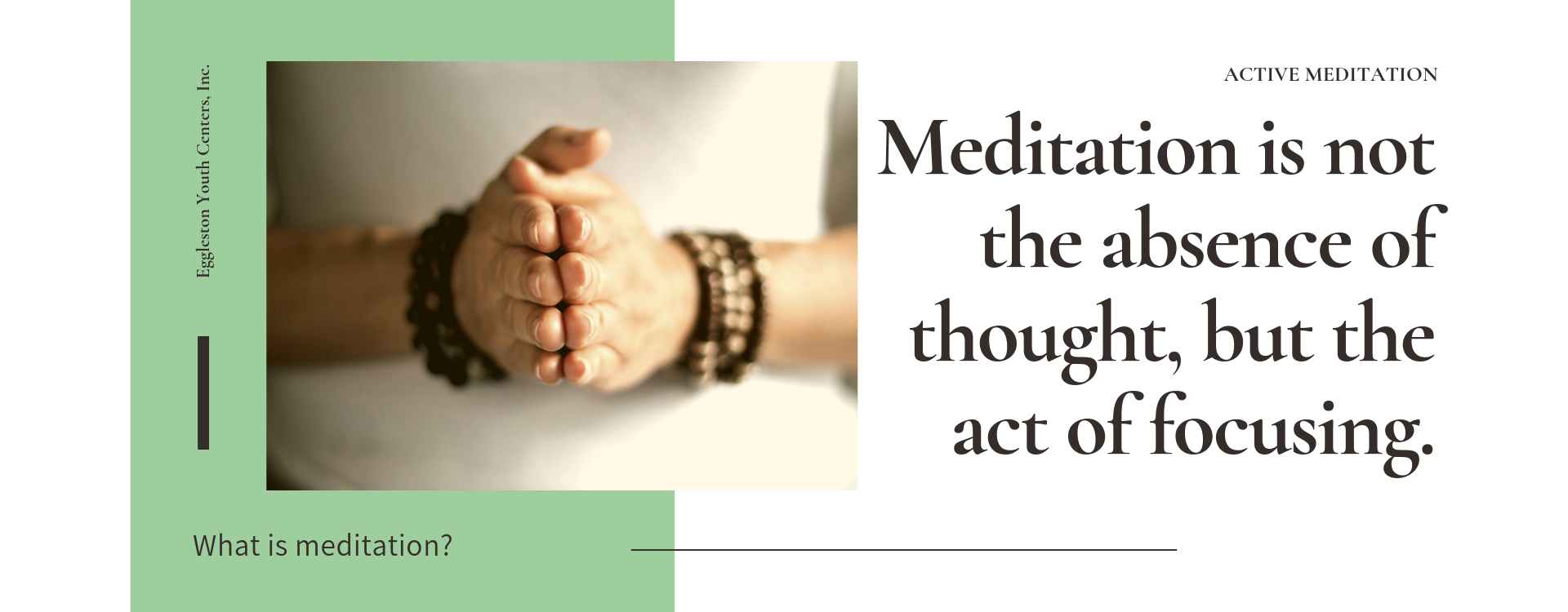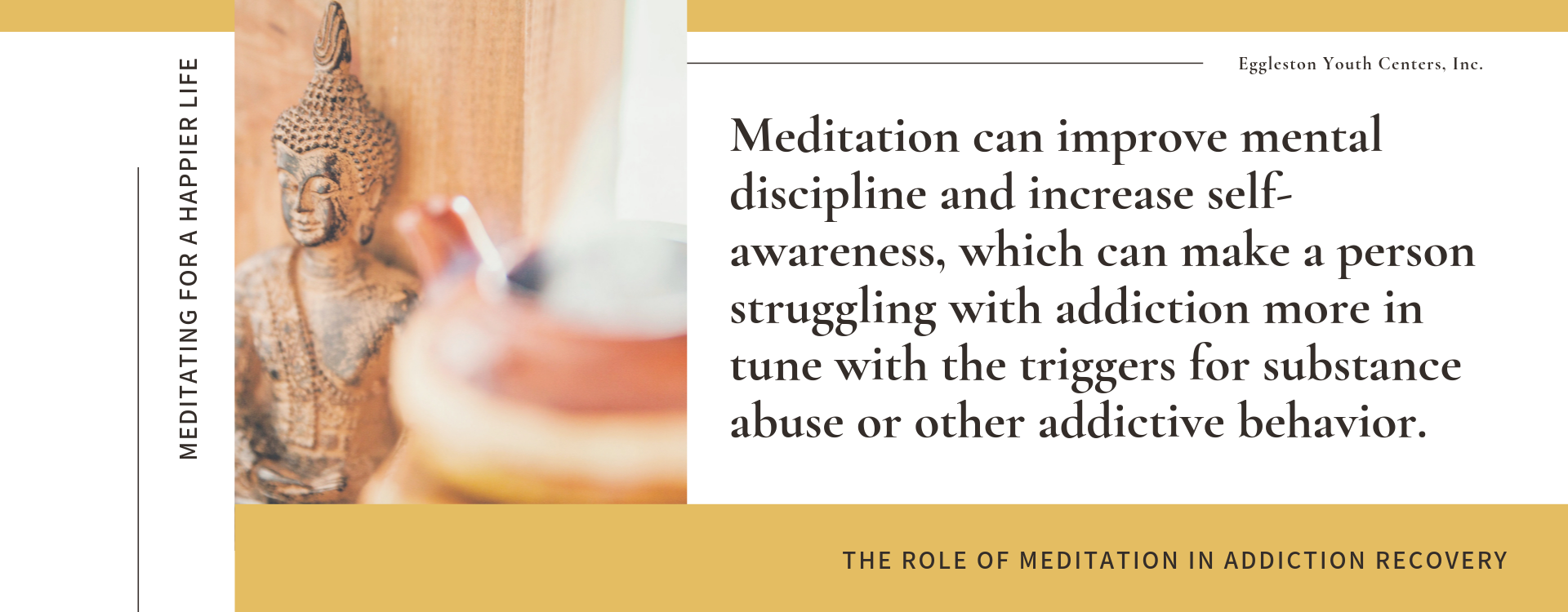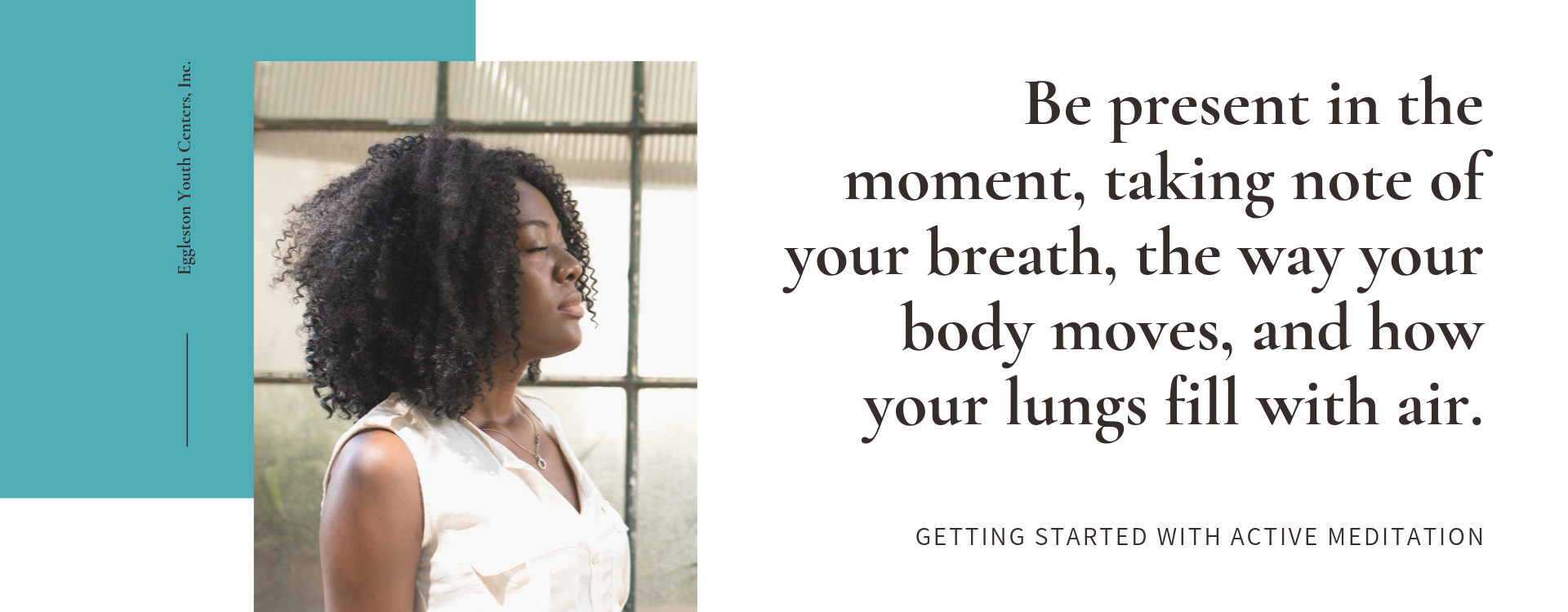Both physical exercise and meditation have both mental and physical benefits. Both are effective for controlling stress and anxiety, and both have been linked to reductions in blood pressure and improved heart health. Combining the two – a practice called active meditation – has a synergistic effect and creates a better result than what the two disciplines can do separately.

What Is Meditation?
Many people are confused by meditation and what it entails. Some, for example, think that meditation is the act of not thinking at all – in other words, imagining the mind as a blank canvas.
This is a common misconception. Meditation is not the absence of thought, but the act of focusing. The driving principle behind meditation is to focus on one thing, but thoughts inevitably come. The key is to meditation is to release the thoughts as they come, thereby achieving a better state of relaxation and calming your mind, body, and spirit.
Meditation generally involves focusing on breathing, a burning candle, or another object in an attempt to clear the mind. Another form of meditation called mindfulness meditation, involves being in the present and allowing the feelings and thoughts to flow without judgment or reservation.
What Are The Benefits of Meditation?
Meditation can be an integral part of a healthy lifestyle. Practicing regular meditation has several evidence-based benefits, like:
- Stress reduction. A study of over 3,500 adults showed that regular meditation was effective in reducing stress, and you can reap the benefits by practicing meditation for just a few minutes.
- Relief of anxiety-related symptoms. In an eight week study on mindfulness meditation, participants experienced less severe symptoms related to panic disorders, social anxiety, and obsessive-compulsive thoughts.
- Improved mental health. Studies on mindfulness meditation link regular practice to reduced symptoms of depression, more positive outlook, and improved self-efficacy and image.
- Improved self-awareness. Sometimes, we are not aware of negative behaviors or self-defeating thoughts. Practicing meditation gives you better control of your thoughts and allows you to steer them in more positive or constructive directions.
- Better sleep. Insomnia is a common problem among the young and old alike. A study compared sleep readiness and patterns in two groups: those who meditated and those who did not. The meditation group fell asleep faster and experienced less awake time during the night compared to the control group.
Meditation is gaining popularity because of these benefits, especially in a society where individuals are overloaded with tasks and responsibilities. Regular practice of meditation can help with symptoms of mental health disorders like depression and anxiety, while promoting healthy sleep and positive self-image. There is even some evidence to suggest that practicing meditation can improve attention span and make people more open to learning new things.

The Role of Meditation in Addiction Recovery
One way that meditation can be especially useful is in addiction treatment and recovery. There is a strong body of evidence for the use of meditation in addiction treatment programs. For example, meditation can improve mental discipline and increase self-awareness, which can make a person struggling with addiction more in tune with the triggers for substance abuse or other addictive behavior.
Additional studies have shown that meditation can help people redirect their attention and control their impulses and emotions, all which play an integral role in substance use disorders. In a study of 19 individuals recovering from alcohol use disorder, participants who received meditation training ultimately reported they could better control cravings as well as craving-related stress.
Meditation works as a holistic treatment for addiction by helping individuals develop healthy coping skills while understanding the multi-faceted causes behind their substance use disorder (i.e. emotions, impulses, and cravings). For this reason, meditation has become a common part of holistic therapy treatment programs directed at helping people recover from substance use disorders.
Meditating for a Happier Life
Meditation has several applications in the treatment of behavioral health and substance use disorders, but it has another compelling benefit: it makes people happier.
A famous study in 1978 found lottery winners weren’t much happier than people in the hospital suffering from spinal cord injuries. To address this phenomenon, modern psychology came up with the theory of the “happiness set point.” The way in which we experience the world is largely genetic. People who are naturally happier have more activity in their frontal cortex. Even after bad things happen, they tend to rebound quicker than people with less. Your natural level of happiness is your set point. Meditation can, however, help reset your brain and make your happiness set point higher by rewiring major areas within your frontal cortex.
Meditation can also improve your memory, creativity, and ability to make tough decisions. By practicing mindfulness, people can be more “in the moment,” which makes experiences more enjoyable.
What Is Active Meditation?
For some, the idea of meditation can be nightmarish. Some don’t want to be alone with their thoughts, while others shudder at the idea of sitting for long periods of time. Meditation admittedly takes work and practice, and it can take a while to become accustomed to letting the thoughts flow without reservation or judgement.
Those who do not like to sit still for long may appreciate active meditation as an alternative to traditional forms of the discipline. In active meditation, instead of focusing on a candle or breathing, choose and activity and dedicate your brain power to that. One way to do this is to listen to your breathing in the here and now, and note the feel and sound of everything around you.
Active meditation can be as simple as taking a walk. Focus on each aspect of the activity and what it entails from a multisensory perspective. See the way that your feet move and notice the way your body parts move as you move through the motion of taking steps. The key is to become thoroughly absorbed in the activity, such that nagging thoughts and doubts fall away. This is the practice of active meditation, and practicing it regularly can help you reap the benefits of improved self-awareness, mental health, and well-being.

Getting Started With Active Meditation
If you’re not sure where to start with active meditation, start slow. Especially if you are new the practice of meditation, pick a specific activity and frame your meditation around that. Possible activities include jumping rope, stretching, yoga, or taking a run. As you practice active meditation, focus on the multi-sensory activities that occur as you go through the motions. Focus only on the activity and not on the future, past, or other things you cannot control. Be present in the moment, taking note of your breath, the way your body moves, and how your lungs fill with air. This ultimately helps you achieve a calm body and relaxed mind.
When participating in active meditation, deliberation is essential. Focus on your surroundings as well as the sensations you experience. As you progress through the experience, you can deliberately release the tension you naturally hold in your shoulders, neck, and arms. Enjoy your movements and your surroundings. This means you should not be listening to music, podcasts, or anything else on your phone. Eliminate distractions and enjoy the act of exercising – that is how you reap the benefits from active meditation.
You can practice active meditation by engaging in almost any activity. No matter what you choose, when you combine the practice of meditation with physical activity, you can effectively combine the benefits of both disciplines. For example, both exercise and meditation are associated with reductions in stress, so combining the two can lead to significant improvement of stress of anxiety-related symptoms.
When it comes to choosing an active meditation activity, the only limit is your imagination. No matter what you pick – weight lifting, swimming, dance, or Pilates – make sure it is something you enjoy.
Reap the Benefits of Exercise and Meditation
Just how effective is active meditation in improving well-being? According to one of the first studies of its kind, very much so. Researchers from Rutgers University found 52 young adults – 22 or whom suffered from clinical depression – and enrolled them in a targeted mental and physical health program. For eight weeks, participants hit the treadmill for 30 minutes and meditated for 30 minutes. After each session, researchers took assessments of the participants’ emotional states.
The results were astounding. Everyone – regardless of whether they were clinically depressed – experienced reductions in anxiety and stress. Both groups also reported that they tended to dwell less on negative situations in their lives after the eight week session. Perhaps most notable, however, is that the group who had clinical depression reduced their symptoms by 40%.
Physical activity has several documented mental health benefits, including better self-efficacy, controlling symptoms of stress and anxiety, and promoting better sleep. These are tied to more positive outcomes, such as improved emotional health and better brain functioning.
Meditation also has emotional and mental health benefits, from increased willpower and better mental fortitude, especially in the face of adversity. By combining these two, individuals can improve their mental, physical, and spiritual health by participating in a single activity. Even doing it once a week can lead to significant benefits.
Combine Exercise and Meditation for the Best of Both Worlds
Both exercise and meditation are good for the human body. Meditation works by activating the parasympathetic nervous system, which calms the body’s natural response to stress. At the same time, meditation is largely based on learning. A person who meditation consistently learns to understand and appreciate their mind and how thoughts come and go over time. This changes the brain for the better, allowing a person to better respond to stimuli – even when that stimulus is negative.
Physical activity also improves well-being, but in a different way. Scientists do not fully understand how physical activity reduces stress, but some theorize it has something to do with the development of brain cells. Exercise also improves blood flow and the amount of oxygen that gets into the brain, which can help elevate mood and improve cognition.
Combining exercise and meditation can offer profound benefits that affect mind, body, and spirit. By practicing physical activity and meditation simultaneously, you can significantly improve your health and enjoy the benefits that extend to all areas of your life, from reduced symptoms of behavioral health disorders to increased mental fortitude and ability to react positively to stressors that may arise.

Assistant Executive Director
Cassandra Gibson-Judkins, Assistant Executive Director, is a licensed clinical social worker who has dedicated her career to providing services to children, youth and families. She has been a loyal employee at Eggleston since 1978. During her tenure at Eggleston, she has held numerous leadership positions in residential treatment, foster family, adoptions, and behavioral health program divisions. In addition, she served at the Department of Children and Family Services form 10 years, specializing in adoption services.


